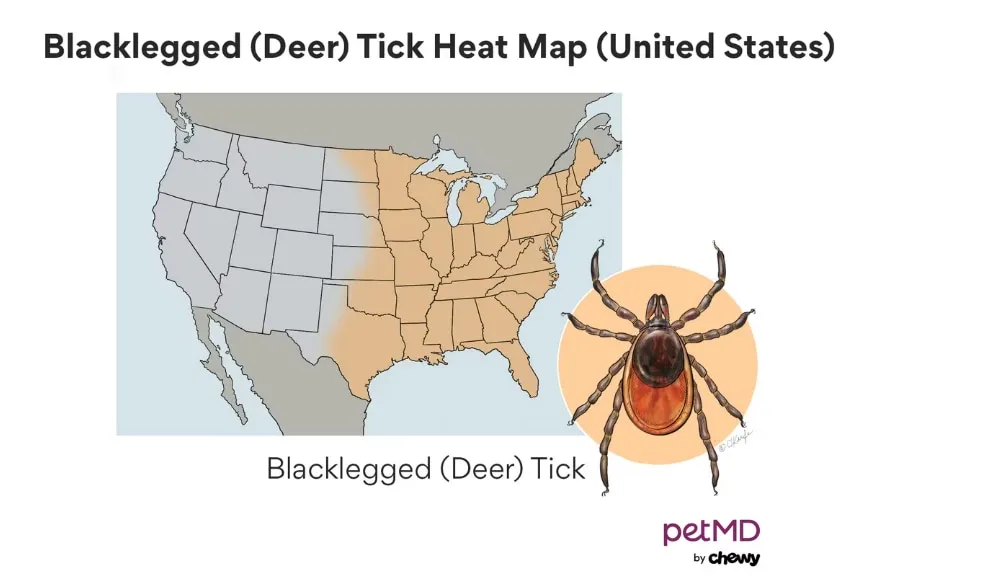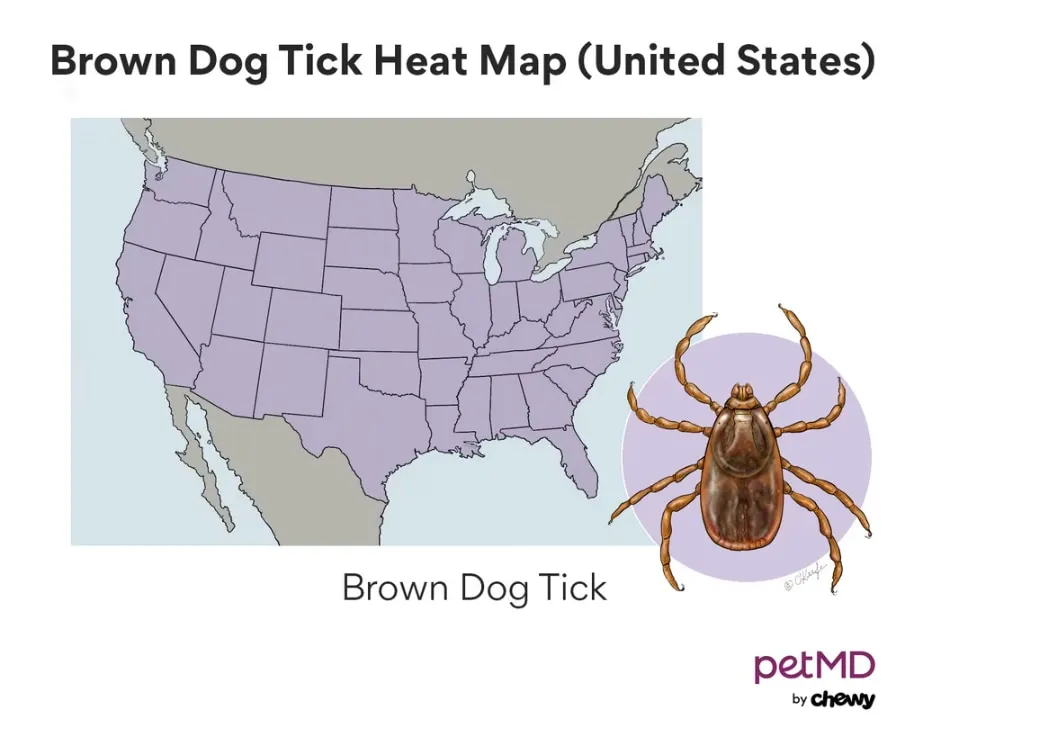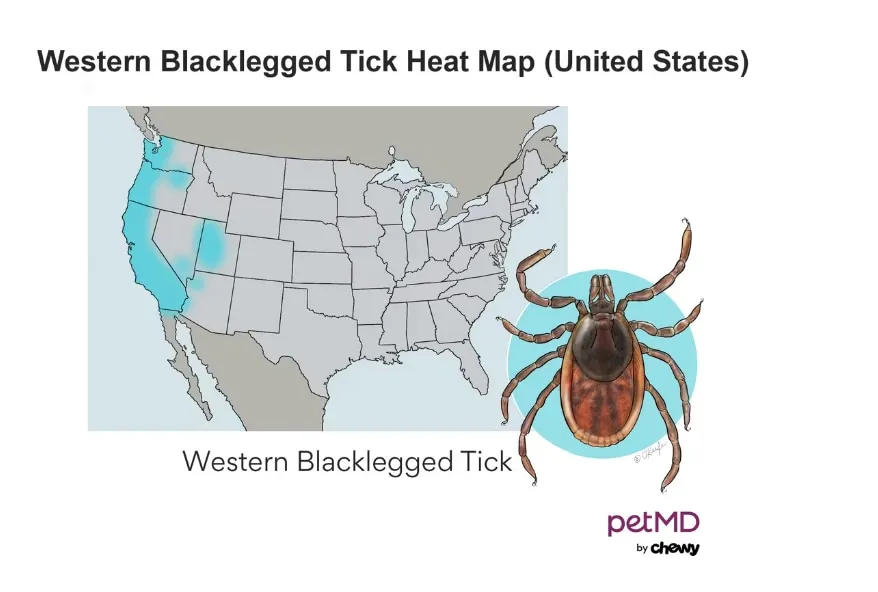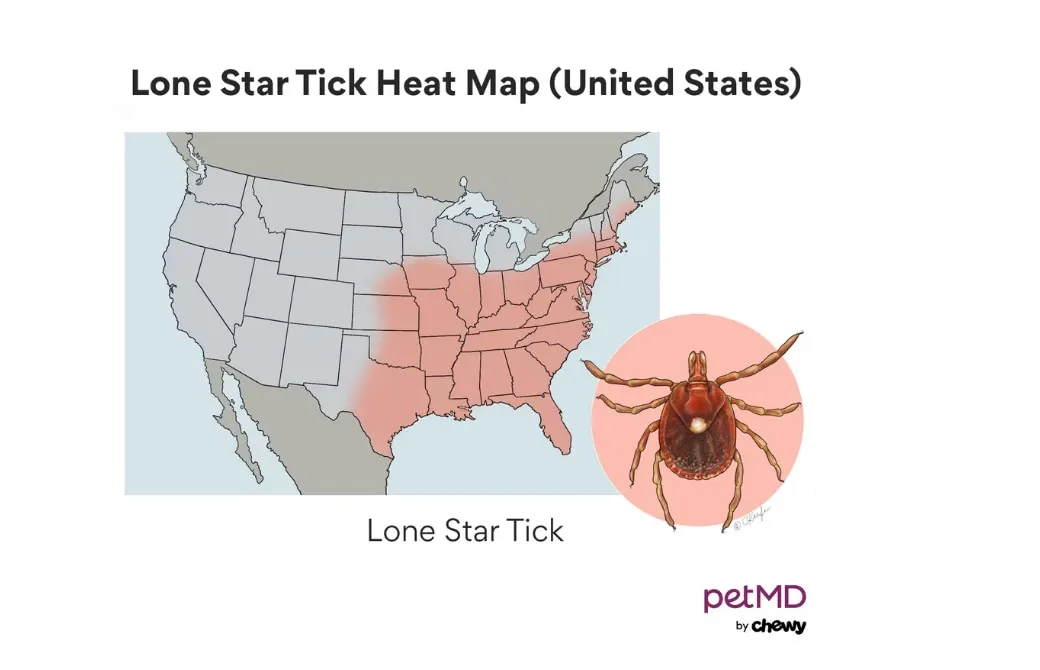Preventative care is paramount for ensuring your dog’s health and happiness. Among the most effective strategies for warding off potential health issues are consistent, high-quality monthly flea and tick treatments. These essential preventatives protect your canine companion from a host of parasites and the serious diseases they carry, safeguarding both your pet and your household.
This guide will delve into why monthly prevention is critical, when to administer it, how to select the most suitable product for your dog, and explore some of the best monthly options available on the market. Understanding these aspects is key to making informed decisions for your dog’s long-term well-being.
Why Monthly Flea and Tick Prevention Is Crucial for Your Dog
Fleas and ticks are more than just annoying pests; they are ectoparasites that feed on your dog’s blood, directly impacting their health and potentially transmitting dangerous diseases. Regular, monthly prevention is the frontline defense against these common threats.
Health Risks for Dogs
The bites from fleas and ticks can lead to a variety of severe health problems for your dog. Flea saliva can trigger intense allergic reactions, leading to flea allergy dermatitis, which causes extreme itching and skin infections. In young puppies or small dogs, heavy flea infestations can even result in anemia due to significant blood loss.
Tick bites are equally, if not more, dangerous. They can cause localized infections, abscesses, and in rare cases, tick paralysis. More critically, ticks are vectors for numerous diseases, including:
- Lyme disease
- Ehrlichiosis
- Anaplasmosis
- Rocky Mountain spotted fever
- Babesiosis
- Tularemia
These conditions can cause a wide range of symptoms, from lethargy and lameness to fever and organ damage, sometimes proving fatal if not treated promptly. Protecting your dog proactively ensures they avoid these painful and debilitating illnesses. Beyond specific preventatives, maintaining your dog’s overall health is paramount, sometimes involving managing conditions with approaches like home remedies for dogs.
Risk to Human Health
The threat posed by fleas and ticks isn’t confined to your dog. Many tick-borne diseases, such as Lyme disease and Rocky Mountain spotted fever, are zoonotic, meaning they can spread from animals to humans. Fleas can also carry pathogens like Bartonella (cat scratch disease) and tapeworm larvae, which can infect humans. By keeping your dog free of fleas and ticks, you significantly reduce the risk of these parasites and their associated diseases entering your home and affecting your family members. This makes monthly prevention a vital component of public health as well as pet care.
When Does Your Dog Need Monthly Flea and Tick Prevention?
Fleas and ticks are incredibly resilient and can thrive in diverse environments across many geographical areas. Their presence is not limited to warm seasons; many species can survive and even reproduce in colder months, especially if they find refuge indoors.
Year-Round Protection
Because fleas and ticks pose a year-round threat, and the diseases they carry can harm both your dog and spread to people, it’s essential to maintain a consistent monthly prevention schedule. This means administering preventative treatments every month, regardless of the season or your local climate. A lapse in prevention, even for a short period, can leave your dog vulnerable to infestation and disease transmission.
Starting Early: Puppies
Establishing a preventative routine early in your dog’s life is crucial. Most monthly flea and tick preventatives are safe for puppies as young as 8 weeks old, though specific product instructions should always be followed. Starting prevention at this age helps protect puppies during a critical developmental period when their immune systems are still maturing and they are more susceptible to the severe effects of parasitic infestations. Consistent, early prevention lays the groundwork for a lifetime of good health.
How to Choose the Best Monthly Flea and Tick Treatment for Your Dog
Selecting the optimal monthly flea and tick treatment involves more than just picking a popular brand. It requires careful consideration of various factors specific to your dog, your lifestyle, and your environment.
Consult Your Veterinarian First
Before deciding on any flea and tick medication, it is imperative to consult with your veterinarian. Your vet has a comprehensive understanding of your dog’s medical history, local parasite prevalence, and the specific needs of your pet. They can guide you through the options and help you make an informed decision that is a good fit for your dog. Always review the product label with your veterinarian to confirm:
- The product is formulated for dogs, not cats, and is suitable for your dog’s age and weight.
- It protects against the specific parasites prevalent in your area (fleas, various tick species, heartworms, etc.).
- Instructions for administration (with or without food, frequency, drying time for topicals).
- Potential side effects, drug interactions, and what to do in case of an adverse reaction.
Understanding Product Types: Pesticides, Repellents, Growth Inhibitors
Flea and tick preventatives work in different ways:
- Pesticides (Insecticides/Acaricides): These active ingredients kill parasites on contact or after they bite your dog. Many modern preventatives use targeted pesticides that are safe for dogs but lethal to fleas and ticks.
- Repellents: Some products contain ingredients that deter fleas and ticks from even landing on your dog, reducing the chance of bites.
- Growth Inhibitors (Insect Growth Regulators – IGRs): These substances disrupt the life cycle of fleas by preventing eggs from hatching or larvae from developing into adults. They are crucial for breaking the infestation cycle in the environment.
Each type tackles pests at different life stages, and combination products often utilize a mix of these mechanisms for broader protection.
Benefits of Combination Preventatives
While some products target only fleas, combination flea and tick preventatives offer a broader spectrum of protection. These products contain multiple active ingredients to combat various types of pests. Many also provide additional protection against internal parasites such as heartworms, roundworms, hookworms, and even mites.
For example, Credelio Quattro provides comprehensive parasite protection, covering fleas, ticks, heartworms, roundworms, hookworms, and tapeworms. Such all-in-one solutions can simplify your preventative routine and offer robust defense against a wide array of threats.
Key Factors to Consider
Several practical and medical factors should influence your choice of monthly flea and tick treatment.
Application Method
Monthly flea and tick preventatives commonly come in two primary forms:
- Oral Chewable Tablets: These are given to your dog like a treat and work systemically, meaning the active ingredients are absorbed into the bloodstream. Oral treatments are convenient and not affected by bathing or swimming. However, you need to ensure your dog consumes the entire tablet and doesn’t vomit it up before absorption. They are an excellent choice for dogs that swim frequently or for households with young children or other pets who might come into contact with a topical application.
- Topical Spot-Ons: These are liquid medications applied directly to your dog’s skin, typically between the shoulder blades or down the back. Topical preventatives are a good option for picky eaters or dogs with sensitive stomachs who may struggle with oral medications. However, care must be taken to prevent children or other pets from touching or licking the application site before it dries, which can take several hours. Topical treatments may also lose some efficacy if your dog swims frequently or is bathed often.
Geographical Location & Local Parasites
The prevalence of specific flea and tick species, and the diseases they carry, varies significantly by geographical region. For instance, Lyme disease is more common in certain areas of the Northeast and Midwest United States. The Companion Animal Parasite Council (CAPCVET.org) is an excellent resource that provides detailed maps and information on parasite populations in different areas. Consulting this resource, along with your veterinarian, ensures you select a product effective against the specific threats in your local environment.
 Map showing tick prevalence in a specific US region
Map showing tick prevalence in a specific US region
This map illustrates the distribution of certain tick species across various geographic locations, aiding in targeted monthly flea and tick prevention strategies.
 Detailed map of parasite distribution
Detailed map of parasite distribution
Visualizing regional parasite trends is crucial for dog owners to choose the most effective monthly flea and tick treatment based on their local risk factors.
 Seasonal tick activity data by region
Seasonal tick activity data by region
Understanding the seasonal activity of various parasites helps pet parents maintain year-round vigilance with monthly flea and tick preventatives.
 Geographic spread of tick-borne diseases
Geographic spread of tick-borne diseases
Regional disease incidence highlights the importance of tailored monthly flea and tick treatment plans to protect dogs from prevalent local threats.
Access to the Outdoors & Exposure Risk
Consider the types of outdoor environments your dog frequents. Dog parks, hiking trails, wooded areas, tall grasses, and even unkempt backyards can be hotbeds for fleas and ticks. Dogs that spend significant time in these high-risk areas, or interact frequently with other animals, have a higher chance of exposure.
However, even if your dog primarily stays indoors, prevention is still recommended. Fleas can easily enter your home through window screens, on other pets that venture outside, or even hitch a ride on your clothing or shoes. Veterinarians universally recommend year-round flea and tick prevention for all dogs, regardless of their indoor or outdoor lifestyle, due to the ease of parasite transmission.
MDR-1 Gene Sensitivity
Certain dog breeds, such as Collies, Australian Shepherds, and Shetland Sheepdogs, may carry a specific gene mutation called MDR-1. This mutation affects their ability to metabolize and excrete certain medications, making them more sensitive to some drug ingredients. While many modern parasite preventatives have been tested and deemed safe for MDR-1 affected dogs, it’s a crucial factor to discuss with your vet, especially if you own a susceptible breed. Genetic testing for the MDR-1 gene is available and recommended by many veterinarians for at-risk breeds.
Dog’s Lifestyle
While no breed is inherently more prone to acquiring fleas or ticks than others, a dog’s individual lifestyle can influence their exposure risk. Working dogs, herding dogs, or hunting dogs that spend extensive periods in fields, forests, or around livestock may have greater exposure to parasites. In contrast, companion dogs that spend most of their time in controlled environments might have lower, but still present, exposure risks. Tailoring the preventative to their activity level and typical environment can optimize protection.
Life Stage: Puppy vs. Adult Dog
A dog’s age and size are critical considerations. Most monthly flea and tick preventatives have minimum age and weight requirements, typically starting at 8 weeks old and varying weight thresholds. Always check the package insert for specific guidelines. For very young puppies, specialized formulations may be required. For example, Revolution Topical Solution for Kittens and Puppies is designed for young animals and can be used as early as 6 weeks of age. Ensure the product you choose is appropriate for your dog’s current life stage and weight category.
Existing Medical Conditions & Sensitivities
Your dog’s health status is a paramount consideration when selecting a preventative. If your dog has a history of seizures or other neurological disorders, certain classes of preventatives, particularly isoxazolines (e.g., in Nexgard, Bravecto, Credelio, Simparica Trio), should be used with extreme caution and only under strict veterinary supervision, as they may increase the risk of breakthrough seizures in predisposed individuals.
Furthermore, no preventative should be used without thorough discussion with your veterinarian if:
- Your dog has previously had an allergic reaction to any medication.
- Your dog is currently sick, debilitated, or significantly underweight.
- Your dog is pregnant, nursing, or planned for breeding in the near future.
For dogs with pre-existing conditions like kidney issues, selecting a preventative requires extra scrutiny, similar to considering kidney medicine for dogs where ingredient compatibility is key. Your vet can advise on the safest options that won’t exacerbate existing health concerns. While rare, if your dog experiences any neurological discomfort or muscle stiffness post-treatment, always consult your vet. They can advise on supportive care, which might occasionally involve considering something like a natural muscle relaxer for dogs.
Prescription vs. Over-the-Counter Monthly Flea and Tick Treatments
The market offers both over-the-counter (OTC) and prescription-only monthly flea and tick preventatives. Understanding the differences is important for making an informed choice.
Over-the-Counter Options
Over-the-counter flea and tick preventatives are readily available online or in pet supply stores without a veterinary prescription. These products can be a convenient option for many pet owners. However, their active ingredients and concentrations may differ from prescription-strength options, and their efficacy can vary.
If you opt for an OTC flea and tick preventative, it is still crucial to consult with your veterinarian. They can confirm its safety for your specific pet, ensure it addresses the prevalent parasites in your area, and advise on proper usage to maximize its effectiveness and minimize risks.
Prescription-Strength Solutions
Prescription monthly flea and tick preventatives require a veterinarian’s authorization. These products are often recommended by vets because they typically contain more potent or broader-spectrum active ingredients that are highly effective and have undergone rigorous safety testing. While they may sometimes come at a higher cost than OTC options, the increased efficacy and comprehensive protection they offer can provide greater peace of mind and better health outcomes for your dog. Your vet can help you navigate these options and choose the most suitable prescription product.
Popular Monthly Flea and Tick Treatment Products for Dogs
Here’s an overview of some popular monthly flea and tick prevention products, noting their key features and considerations:
Advantage II
Advantage II is a topical monthly product designed specifically for flea control. It contains imidacloprid and pyriproxyfen, which are fast-acting, killing adult fleas within hours, as well as flea eggs and larvae to break the life cycle. It also treats chewing lice but does not offer tick prevention. This product is suitable for dogs and puppies over 7 weeks old and weighing more than 3 pounds.
Advantage Multi
Advantage Multi is a topical monthly solution offering broader protection. Its active ingredients, imidacloprid and moxidectin, treat fleas (killing them within hours), sarcoptic mange, and intestinal parasites like hookworms, roundworms, and whipworms. Crucially, it also prevents heartworm disease. Similar to Advantage II, it does not provide tick prevention. Advantage Multi is safe for dogs and puppies over 7 weeks old and weighing more than 3 pounds.
Comfortis
Comfortis is a chewable tablet that specifically targets fleas. Containing spinosad, it is a fast-acting agent that begins killing fleas within 30 minutes of administration. This product offers no protection against ticks. Comfortis is administered monthly and is suitable for dogs and puppies 14 weeks or older and weighing over 5 pounds.
Credelio
Credelio is a monthly chewable tablet from the isoxazoline drug class, featuring lotilaner as its active ingredient. It is effective against both fleas and ticks, starting to kill fleas within four hours of administration. Credelio is approved for dogs and puppies over 8 weeks old and weighing more than 4.4 pounds. As with other isoxazoline drugs, caution is advised for dogs with a history of seizures, epilepsy, or neurological disorders.
Credelio Quattro
An advanced option, Credelio Quattro is a monthly chewable tablet that combines lotilaner (for fleas and ticks) with moxidectin (for heartworms, hookworms, and roundworms), praziquantel (for two species of tapeworms), and pyrantel (for hookworms and roundworms). This comprehensive formulation provides broad-spectrum protection against six types of parasites. It is administered monthly to dogs and puppies 8 weeks of age and older who weigh at least 3.3 pounds.
Frontline Gold
Frontline Gold is a topical monthly product that kills fleas, ticks, and chewing lice. Its active ingredients are fipronil, (s)-methoprene, and pyriproxyfen. This fast-acting formula begins killing fleas and ticks within hours. It is approved for dogs and puppies over 8 weeks old and weighing more than 5 pounds.
Frontline Plus
Similar to Frontline Gold, Frontline Plus is a topical monthly product containing fipronil and (s)-methoprene. It is effective against fleas, ticks, and chewing lice. While fast-acting, it may take slightly longer to kill parasites compared to Frontline Gold. This product is for dogs and puppies over 8 weeks old and weighing more than 5 pounds.
Frontline Shield
Frontline Shield is a topical monthly preventative that goes a step further, combining fipronil, permethrin, and pyriproxyfen. It kills all fleas, ticks, chewing lice, and stable flies, and also repels mosquitoes, stable flies, and ticks. It acts rapidly, starting to kill fleas in five minutes and ticks within one hour. This product is typically applied monthly and is for dogs and puppies over 9 weeks old and weighing more than 5 pounds. Important Note: This product is highly toxic to cats; extreme caution or avoidance is necessary in multi-pet households.
K9 Advantix II
K9 Advantix II is a topical monthly product that repels and kills a wide range of parasites. Its active ingredients—imidacloprid, permethrin, and pyriproxyfen—target fleas, ticks, mosquitoes, and chewing lice, while also repelling biting flies. It is fast-acting, beginning to kill parasites within hours. Suitable for dogs and puppies over 7 weeks old and weighing more than 4 pounds. Important Note: This product is highly toxic to cats; extreme caution or avoidance is necessary in multi-pet households.
Nexgard
Nexgard is a monthly chewable tablet containing afoxolaner, an active ingredient from the isoxazoline class. It is effective against fleas, deer ticks, American dog ticks, brown ticks, and Lone Star ticks. Nexgard also offers extra-label efficacy against sarcoptic and demodectic mange. It starts killing fleas within four hours and ticks within 48 hours. This product is for dogs and puppies over 8 weeks old and weighing more than 4 pounds. Caution is advised for dogs with a history of seizures, epilepsy, or neurological disorders due to its isoxazoline component.
Onguard Plus
Onguard Plus is a topical monthly product formulated with fipronil and (s)-methoprene. This combination effectively kills fleas, ticks, sarcoptic mange, and chewing lice. It is intended for use in dogs and puppies over 8 weeks old and weighing more than 5 pounds.
Simparica Trio
Simparica Trio is a monthly chewable tablet offering broad-spectrum protection. It contains sarolaner (an isoxazoline for fleas and ticks), moxidectin (for heartworms, hookworms, and roundworms), and pyrantel (also for roundworms and hookworms). It also provides extra-label treatment for demodectic mange, sarcoptic mange, and ear mites. Simparica Trio begins killing fleas and ticks within 12 hours. It is suitable for dogs and puppies over 8 weeks old and weighing more than 2.8 pounds. As an isoxazoline, caution is advised for dogs with a history of seizures or neurological disorders.
Trifexis
Trifexis is a monthly chewable tablet that treats fleas, hookworms, roundworms, and whipworms, and also prevents heartworm disease. Its active ingredients are spinosad and milbemycin oxime. It is a fast-acting drug, beginning to kill fleas within 30 minutes. Important Note: Trifexis does not provide protection from ticks. It is for dogs and puppies 8 weeks or older and weighing over 5 pounds.
Vectra 3D
Vectra 3D is a topical monthly product offering extensive protection and repellency. It combines dinotefuran, permethrin, and pyriproxyfen to repel and kill fleas, ticks, mosquitoes, chewing lice, sand flies, biting flies, and some mites. Vectra 3D starts killing parasites within hours. It is for dogs and puppies over 8 weeks old and weighing more than 5 pounds. Important Note: This product is highly toxic to cats; extreme caution or avoidance is necessary in multi-pet households.
Considerations for Non-Monthly Options
While this guide focuses on monthly treatments, it’s worth noting that some popular preventative products, like Bravecto (which typically provides 12 weeks of protection) or Seresto collars (effective for 8 months), offer longer durations of action. These can be excellent alternatives for owners who prefer less frequent administration, but they fall outside the strict definition of “monthly” treatment. Always discuss all available options and their respective durations with your veterinarian to find the best fit for your dog’s specific needs and your lifestyle.
Conclusion
Choosing the best monthly flea and tick treatment for your dog is a critical aspect of responsible pet ownership. Consistent, year-round prevention not only protects your beloved canine companion from discomfort and potentially life-threatening diseases but also safeguards your entire household from parasitic threats. With a variety of effective oral and topical options available, understanding your dog’s specific needs, your local environment, and potential health considerations is key.
Always remember that your veterinarian is your most valuable resource in this decision-making process. Their expertise ensures that the monthly preventative you choose is safe, effective, and perfectly tailored to keep your dog healthy, happy, and free from parasites. Don’t hesitate to schedule a consultation to discuss the best strategy for your dog. For more insights into comprehensive pet health, explore other articles on Dog Care Story!
References
- PetMD. (Source of original article, provides veterinary-verified health information)
- Companion Animal Parasite Council (CAPCVET.org). (Resource for parasite prevalence data)
- Lauren Jones, VMD. (Veterinarian and author of the original content)
